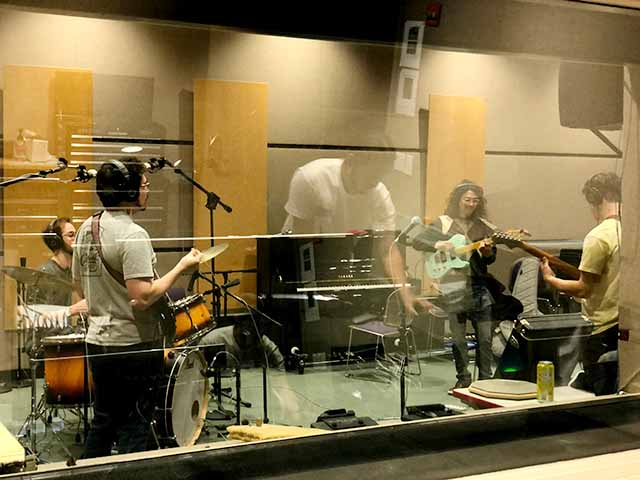
Smithworks
July 2021-June 2022
Composition, Sound Design,
and Audio Engineering.
Smithworks is a cooperative crafting game where players attempt to fulfill the ridiculous weapon orders of their impatient customers—think: first-person Overcooked as medieval blacksmiths. As our senior capstone project for the games program at UCSC, I worked alongside a team of 8 talented artists and programmers as the sole sound designer, audio engineer, and composer.
Musical Direction:
Given the loose fantasy setting, I couldn’t rely on the dark electronic tones I am comfortable composing with, and instead was challenged to focus on catchy melodies and acoustic instrumentation. This involved giving each of three different blacksmith-shops their own unique sonic identity: the Village map has flute, harp, and fiddle playing a quaint waltz. The Capital City’s blacksmith shop, with its industrialized waterwheels, is scored by bright, heroic brass riffs over timpani and snare, which gives way into a jazzy double-time swing section with walking bass. The last level, the Magic Academy, has glockenspiel and marimba playing mysterious chromatic lines accompanied by the gravitas of a soaring string ensemble. You can listen to the 'soundtrack versions’ of these tracks here:
Adaptive Music Techniques:
Because I had worked so heavily on intricate sound design at the expense of a proper score for Invicta Vitae, I used Smithworks to fully explore and practice adaptive music techniques within the industry standard audio middleware, Wwise. Each level’s dynamic music track exhibits vertical layering of instrumentation, horizontal transitions to different sections, and tempo synced stingers.
Each music track begins on the main A section, after players have 'opened the shop.' This is a roughly 2 minute looping piece, which either plays through linearly (Village theme) or randomly selects from sub-sections (City theme). At the start of each level, you'll hear a stripped-back version of the A section; in the case of the Village theme, some plucked chords on the harp and a simple pizzicato bassline. When the players complete one set of orders (at about the one third mark) melodic elements are layered overtop, like the fiddle and flute melodies in the village theme or the bass clarinet riffs in the city theme. To do this successfully, each of the isolated instrument layers had to be composed and mixed to work independently of accompaniment.
In addition to the 'overall progression’-based melodic layering, other percussion or supporting harmonic layers are faded in or out based on the moment-to-moment intensity of gameplay. I worked with the lead designer to program algorithms that would calculate intensity values based on the time limits of all active orders, which I could link to Wwise RTPCs in order to modulate the volumes of tracks. Thus, the percussion layers ramp up in volume as players approach an individual time limits of customers’ orders and then drop out after players have completed them.
Once players have reached the final batch of orders in a level, the music transitions to a climactic B section, involving both a key change (ex: to the relative minor in the Village theme) and rhythmic modulation (ex: a dotted eighth note in the A section of the City theme becomes a quarter note in the B section’s triplet-swing feel). To accomplish these distinctive shifts, a short transition segment is played to smoothly or dramatically bridge between the A section and the B section. This was an incredibly exciting feature of using Wwise: the ability to flag optimal transition points in on a segment which easily synced up to the beat. But, I found that even when a transition might have seemed jarring out of context, the closer I could get it to syncing up with in-game events, the more natural it felt during gameplay.
Victory tag from the City level.
Loss tag from the Academy level.
There are also victory and loss music segments, which are transitioned to at game-over states, giving a definitive end to the looping music. I tried to have each of the victory tags resolve back into the original key and rhythmic feel (on picardy thirds for the City and Academy levels), while the loss tags ended on dissonant or ambiguous chords. An 'arcade-y’ game like this is not the place for musical subtlety…
"Order complete" stinger from Village.
Same stinger, but from the Academy.
Finally, short musical stingers play upon the completion, partial completion, or failure of a customer’s order. While the stingers have unique instrumentation for each map (as well as needing to fit the key and tempo of each track), the short motifs that play are the same, establishing a musical language that players can intuitively learn. I also learned how to track volume levels in Wwise in order to duck the volume of the main music track, so stingers and melodic lines wouldn’t clash as much.









